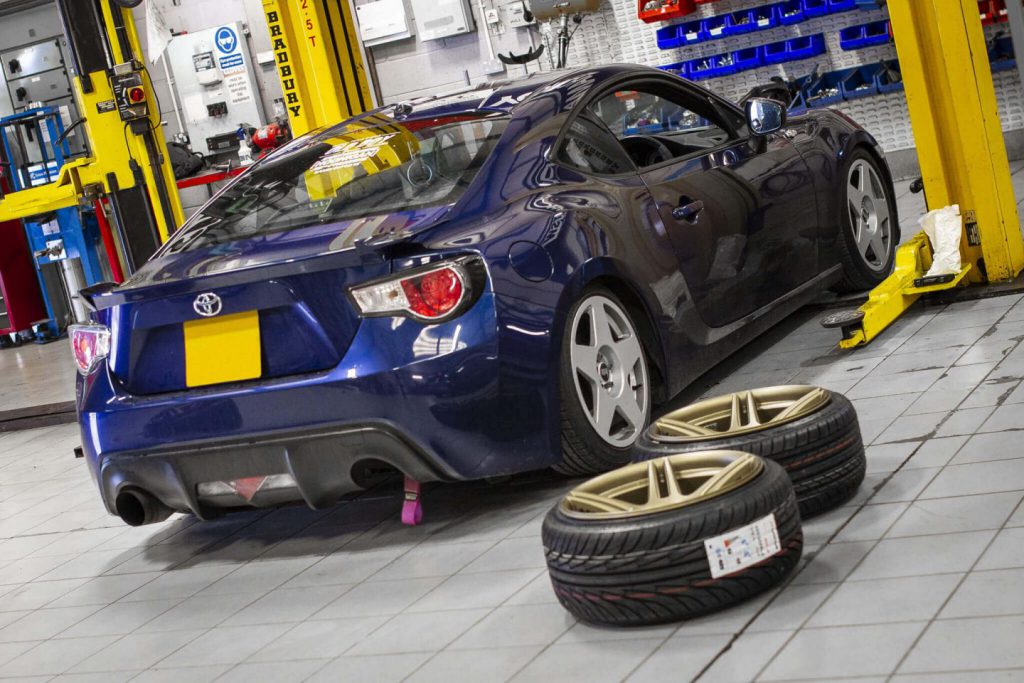
The weight of a wheel really is important. Then again, this is probably not a surprise. We wouldn’t ask the question if it wasn’t.
One of the more underappreciated benefits of alloy wheels is their potential for improving handling. This is probably quite far down most people’s lists of reasons for fitting them. Normally it’s because they look cool. There’s nothing wrong with cool looking wheels of course, but that’s just one of the potential benefits.
The right wheel and tyre combo can make your car nimbler, having very real effects on how quickly you can accelerate and corner. It can also improve how your car feels. To explain how we need to briefly talk about different types of weight.
Sprung vs Unsprung Weight
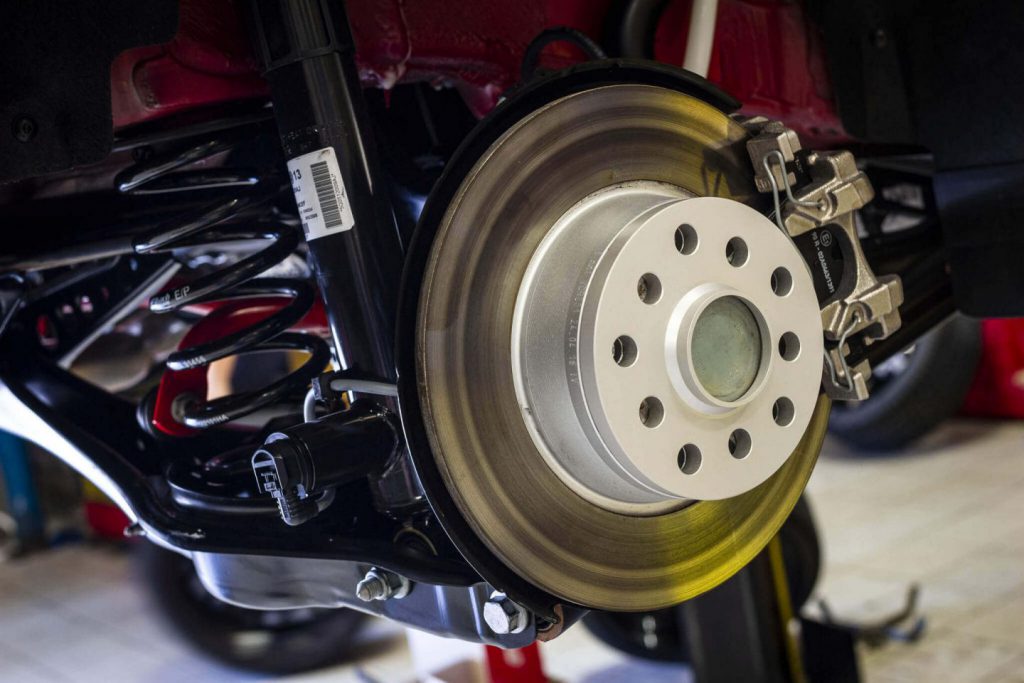
All weight is equal right? Not on a car. Which end of your suspension the weight is on, and whether it is spinning can make quite a difference to how it affects your car.
Weight supported atop your car’s suspension is called “sprung” weight, because it’s supported by the spring whereas weight connected to the bits of your car that move up and down as your drive along is called “unsprung” weight. This is basically the wheels, tyres, brakes, and so on.
Why does this matter? Imagine your car driving down the road. As the wheels of the car drive over bumps and undulations in the road surface, the suspension reacts to allow the wheel to follow them.

This means your cars suspension moves up and down as the wheel follows the surface of the road. Your springs and shock absorbers absorb this motion. The more weight you have at the end of your suspension, the harder it must work to do this. Heavier wheels put more load on your suspension. You also increase the chances of your suspension not being able to keep the tyre in contact with the road all the time because it is still reacting to the previous bump when it hits the next one.
Make your wheels lighter and your suspension starts to have a much easier time. Each bump can be controlled more quickly and easily. This helps keep your tyre in contact with the road for more time, which is obviously great news for car control and braking.
It’s also worth bearing in mind unsprung weight counts for double when you’re removing weight from a car.
Rotational Weight
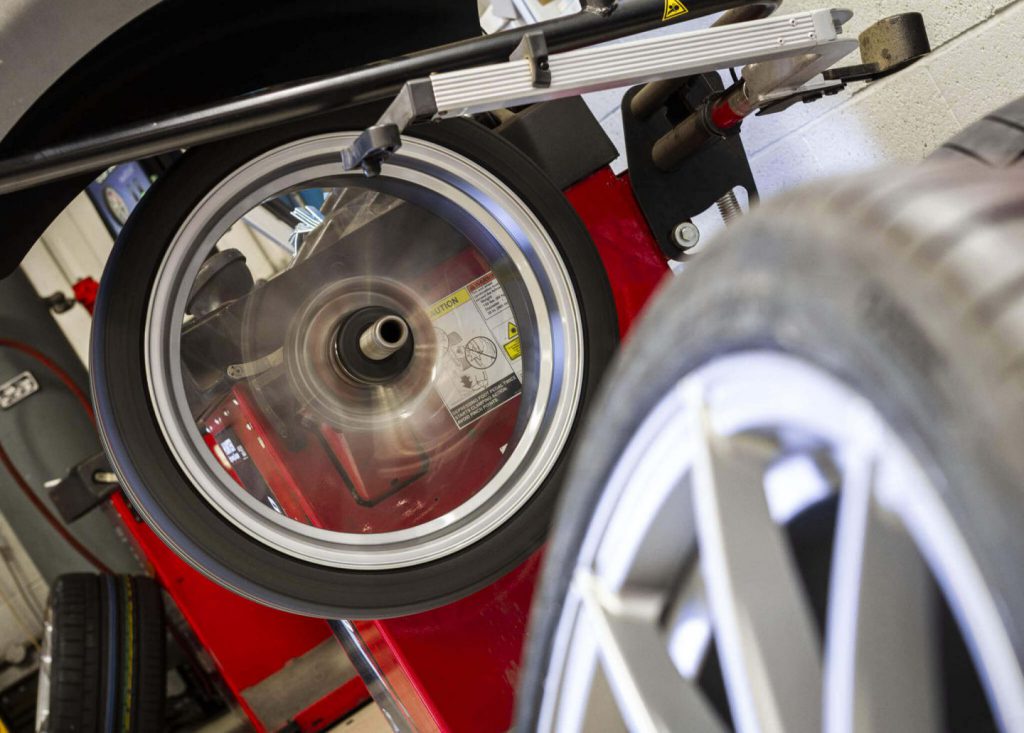
There’s another type of weight we need to consider when talking about wheels. Because your wheels spin as your car moves (at least we hope they do), they count as rotational weight. This is basically anything you need to spend energy to get spinning or stop spinning when your car changes speed.
It’s three times harder than to get rotational mass moving than the sprung weight of your car. That means when you put your foot down, you’re spending three times as much of your engine’s power on getting every kilo of wheel (or tyre) moving as on getting every other kilo moving.
What about my tyres?
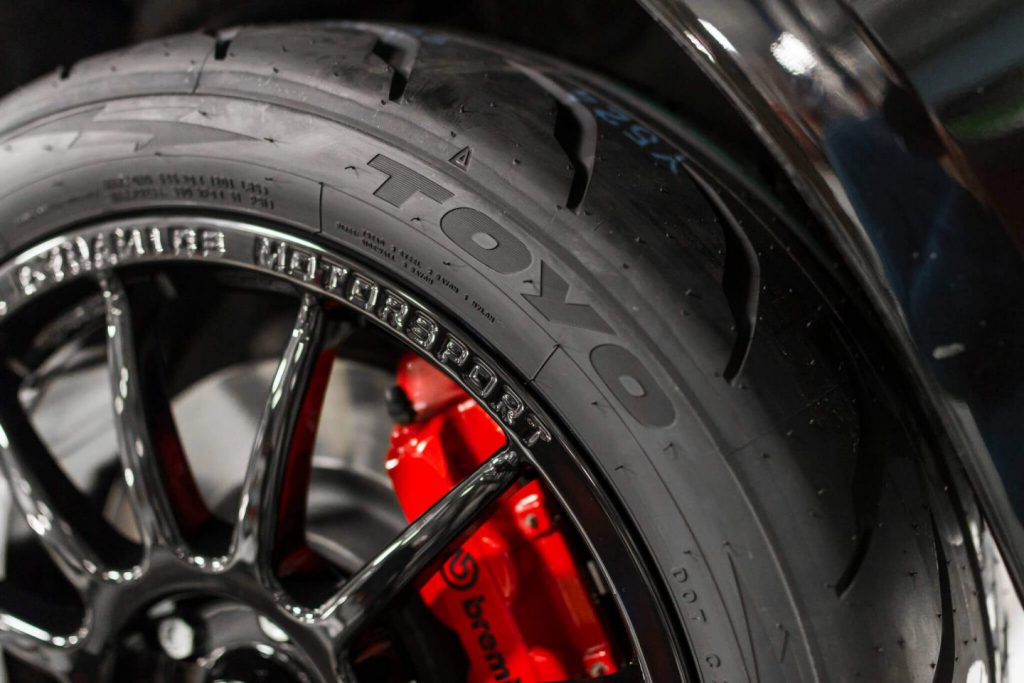
You might have spotted that your wheels aren’t the only things that spin when you put your foot down. Tyres also play their part. The weight of the tyre must be included with the weight of the wheel.
There’s also the grip the tyre offers to consider. Bigger tyres may offer better grip which also has a huge effect on performance and handling. High-performance cars don’t simply come with the smallest, lightest wheels they can. They also need to mount a sufficient amount of tyre for the power and weight of the car and go over the braking system.
This means that in practice what you’re after is the lightest possible wheels that can mount the tyres that you need for your cars weight and power.
What makes wheels light?
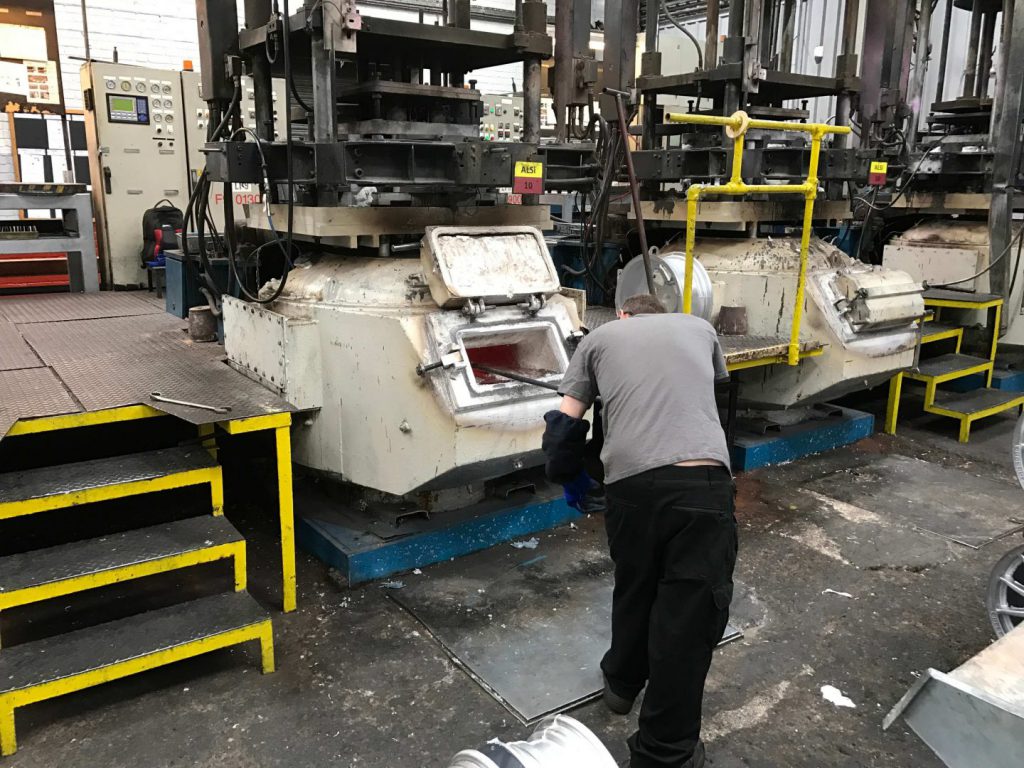
What material wheels are manufactured from, and how it is worked, make the biggest differences to their weight.
Material is simple: aluminium is lighter than steel so if your car has steel wheels, swapping them out for alloy wheels is going to improve things.
Once you’re looking at alloy wheels though, not all wheels are created equal. You might have heard reference to wheels being “Cast” or “Forged”. These are the two main processes for working raw metal into wheels.
Most wheels are cast. Casting is where molten metal is poured into a mould. This is generally a cheaper process than the alternatives when you’re looking at a complicated shape like an alloy wheel. There’s nothing wrong with casting, and plenty of cast wheels are quite lightweight, especially compared to original equipment wheels.
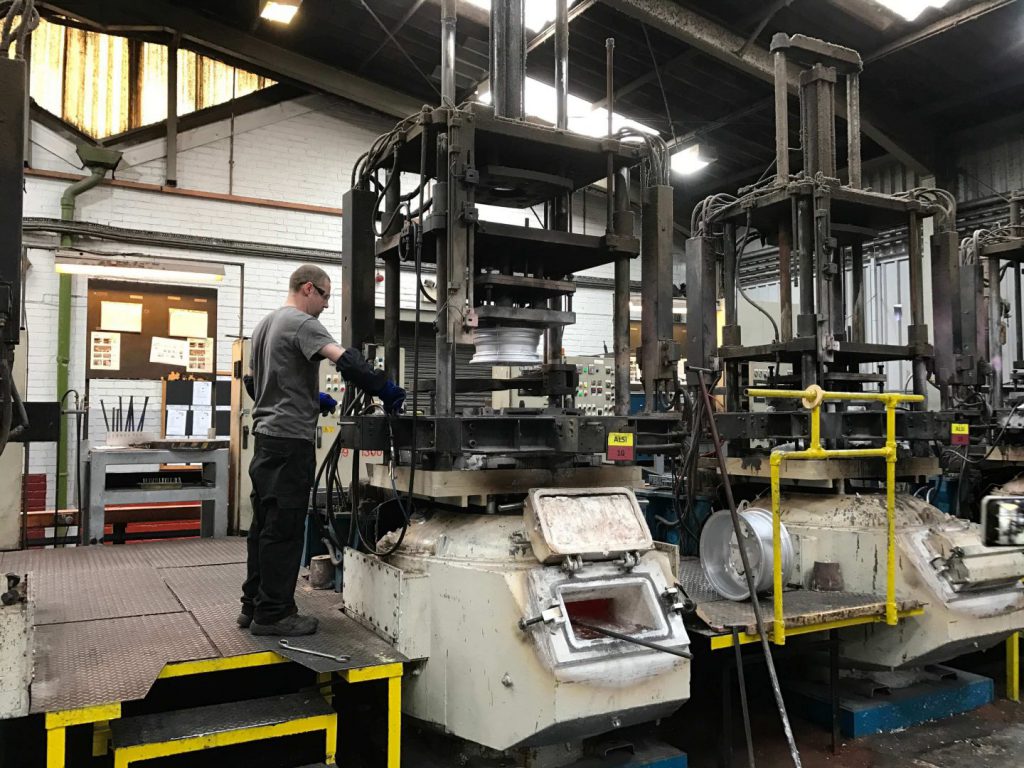
Forging by contrast is applying heat and pressure to aluminium to force it into the shape you want. This process strengthens the metal and makes it more resistance to fatigue. Because the metal coming out of this process is stronger, you need less of it. Less metal makes for a lighter wheel.
There’s also an increasing use of something called “Flow forming” or “Rotary forging” to make wheels. The results of this process tend to be somewhere between the two above in terms of strength.
What this tends to mean is that if you want the lightest possible wheel, you’re generally going to be looking at a forged wheel. Cast wheels can also be very lightweight though, and much cheaper.
Which wheels are lightweight?
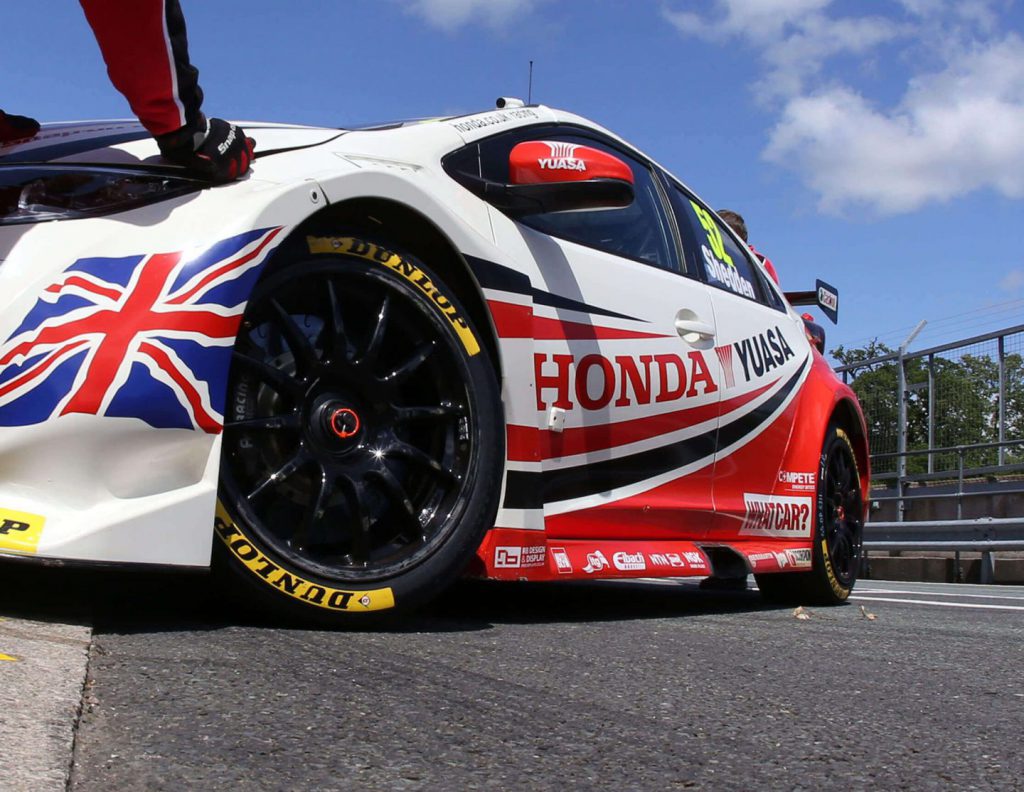
As with a lot of things in the aftermarket performance industry, a lot of the business end of research and development happens around race tracks. It’s no coincidence that the likes of Team Dynamics and OZ Racing are closely associated with motorsport and make strong lightweight alloy wheels.
They aren’t the only firms making light alloy wheels though. The recent rise in rotary forged wheel technology means affordable wheels are getting lighter and lighter and there are plenty of firms who’ve been making lightweight road wheels for a long time. It’s always worth checking out our website to see what the latest wheels on offer are. That said there are a few favourites we keep selling.
Team Dynamics Pro-Race
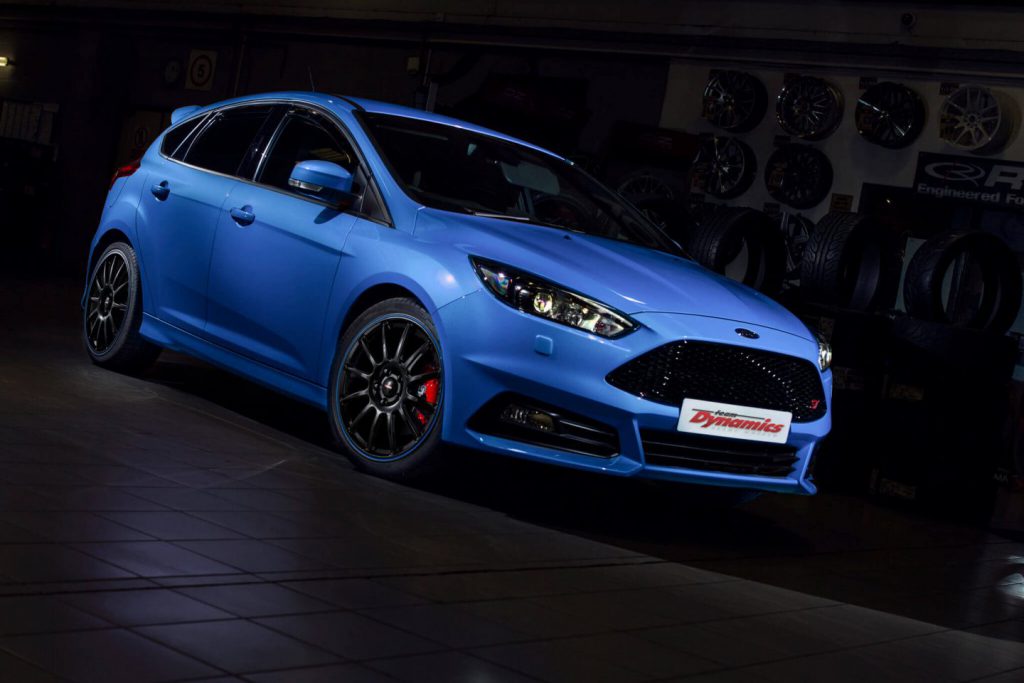
Team Dynamics supply wheels to various kinds of motorsport, the most famous of which is the British Touring Car Championship. The Pro Race 1.2 was developed specifically for the BTCC meaning they need to be both strong and lightweight.
The Pro Race 1.2 wheels are the same as those used on the touring cars, weighing from just 4.5kg for 7×13” up to 9.7kgs for 9×18”. These weights are very impressive for a cast wheel. They’re even more impressive for a cast wheel we sell to lots of happy customers who use them on track. They’re light and tough. These have a real following off track too. These come in a range of direct bore fitments, which is important for track use.
OZ Racing

Perhaps much as you’d expect from a company that supply Formula 1, OZ Racing
2Forge
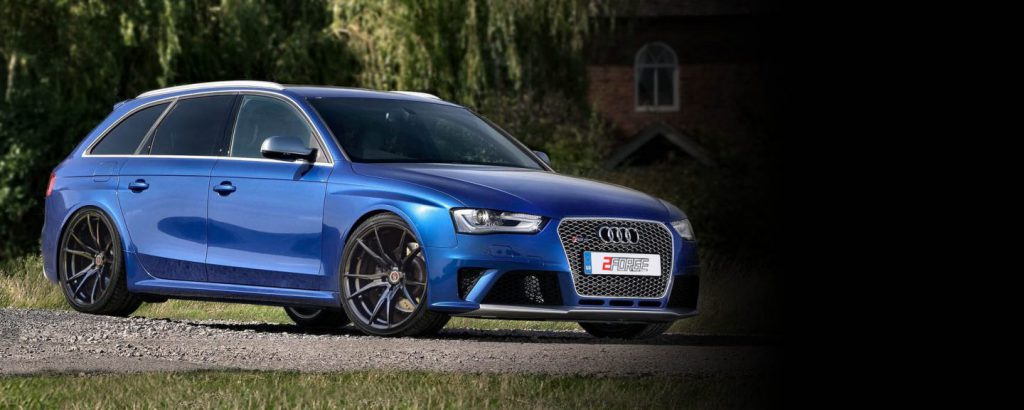
2Forge offer flow-formed, rotary-forged wheels. The flow-forming process produces a stronger barrel than casting alone, which allows this section of
How light do I need to go?
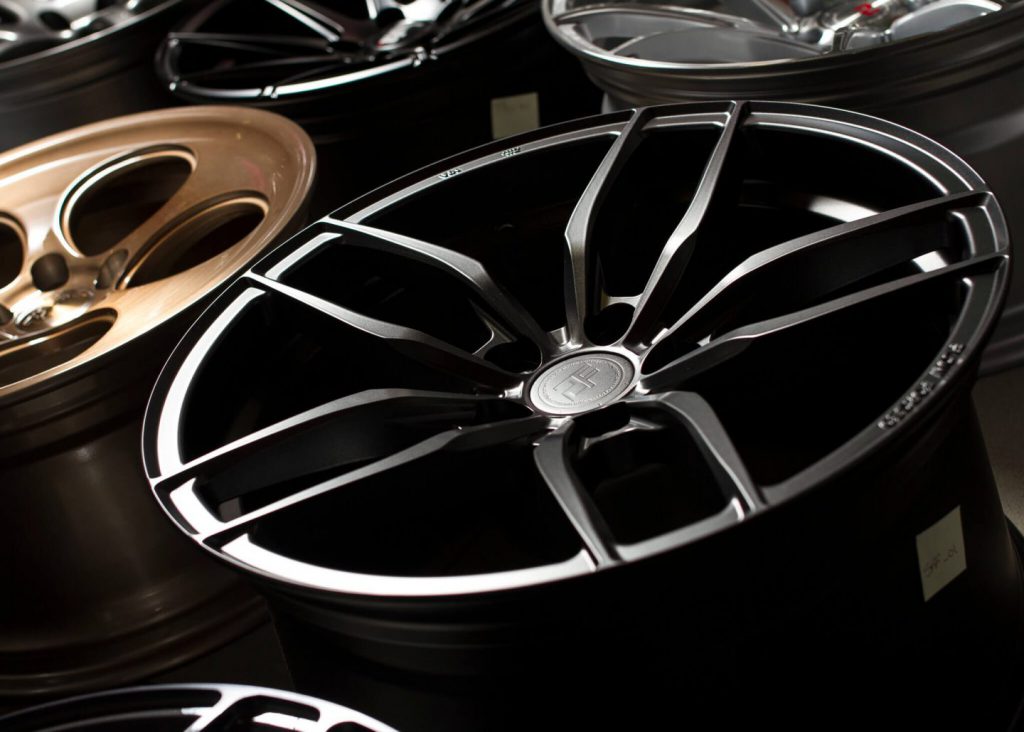
We’ve talked about how going light is a good thing, but not how light you need to go. As with a lot of other aspects of road car tuning, the real-world answer is likely to be a bit of compromise. If money were no object, a set of high-quality forged (or perhaps even carbon fibre) wheels big enough to mount tyres sized sensibly for your car would likely be the preferred choice.

Most of us are not in a position where money is no object though. There’s also the daily diet of potholes and potential kerbing wheels are subject to. If you live somewhere with terrible wheel destroying potholes, what you want to spend on a set of alloy wheels is probably going to be somewhat different to what people who drive only on well-maintained roads will want to spend.
There are also other factors like styling to consider. If you have your heart set on a set of full-face wheels to set off a particular look, you are going to have to accept that more metal = more weight.
We’d say that if your tuning budget includes wheels, going for as light a wheel as you’re comfortable subjecting to your daily commute (or whatever else you’re doing with the car), will allow you to enjoy real handling improvements and more sprightly performance.
If you have your heart set on some really cool looking, but not particularly lightweight wheels? Well, there’s other ways to get more performance out of your car.
